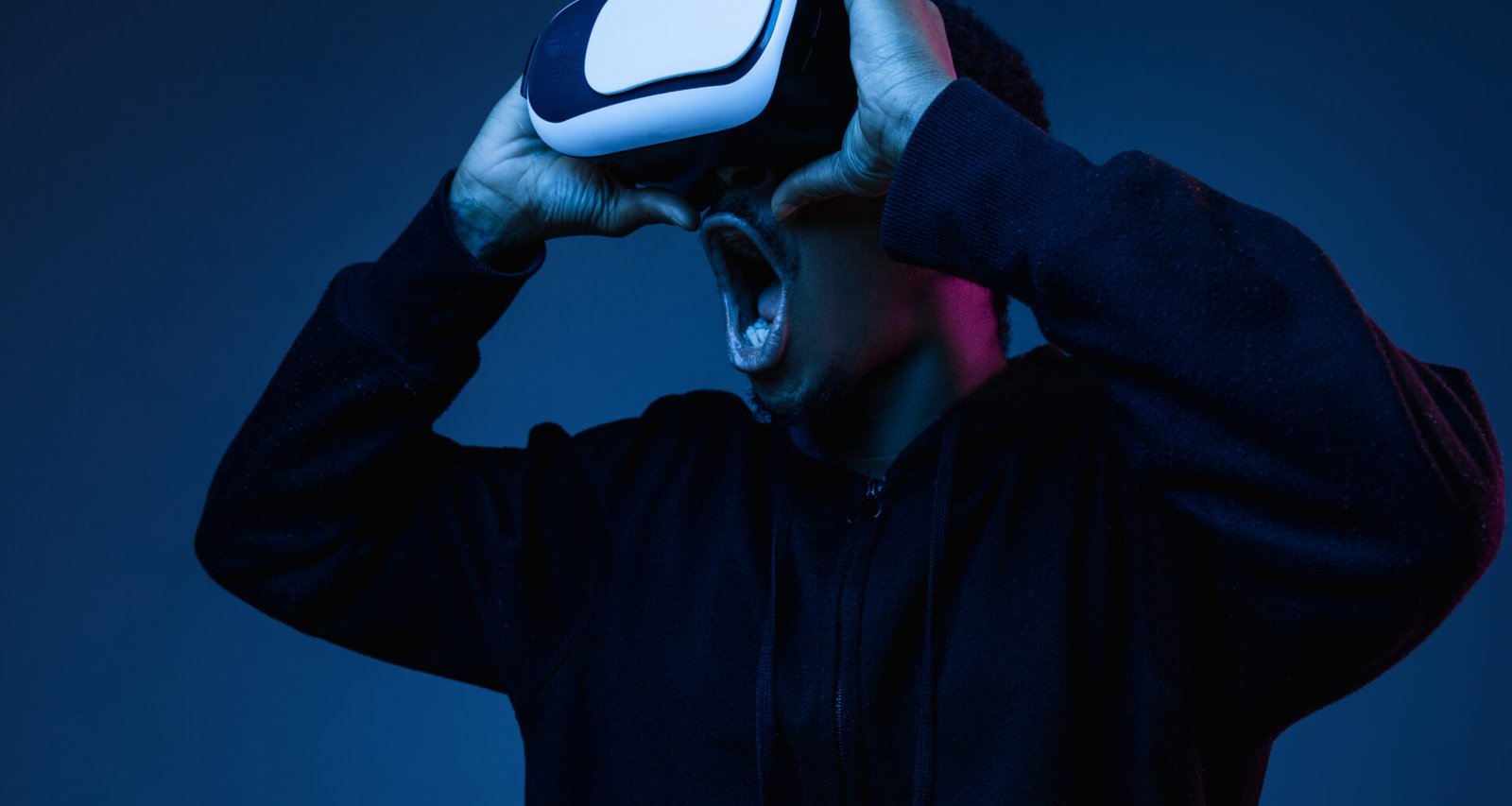Virtual reality (VR) glasses are revolutionizing the way we interact with the digital world. From gaming to healthcare, these devices are pushing boundaries and creating immersive experiences previously thought impossible. As VR technology evolves, its potential applications continue to expand, promising groundbreaking innovations across industries. In this article, we explore the current state of VR glasses, their applications, and the exciting possibilities they hold for the future, including global face-to-face communication on platforms.
Current Leaders in VR Glass Technology
Several tech giants are at the forefront of VR glasses innovation, each offering unique features tailored to various industries:
- Meta (formerly Oculus): Meta’s Quest series has set a benchmark for standalone VR devices, offering high-quality visuals and intuitive interfaces. With their focus on gaming and social VR spaces, Meta is shaping the future of immersive social interaction.
- Sony PlayStation VR: Designed for console gaming, PlayStation VR integrates seamlessly with the PlayStation ecosystem, providing a user-friendly experience for gamers.
- HTC Vive: Known for its precision tracking and enterprise applications, HTC Vive caters to both consumers and businesses, offering solutions for gaming, design, and virtual training.
- Microsoft HoloLens: Although primarily an augmented reality (AR) device, the HoloLens bridges the gap between AR and VR, making it ideal for industrial and educational use.
- Apple Vision Pro: Set to launch in 2024, Apple’s Vision Pro aims to redefine spatial computing, combining AR and VR capabilities to deliver a cutting-edge experience.
Current Applications of VR Glasses
VR glasses are already transforming several sectors, enhancing experiences and increasing efficiency in various ways:
- Gaming and Entertainment
Gaming remains one of the most popular uses for VR technology. Devices like the Oculus Quest 2 and PlayStation VR offer immersive gameplay that transports users into virtual worlds. Beyond gaming, VR is also being used for virtual concerts, cinematic experiences, and theme park attractions.
Healthcare
In medicine, VR glasses are used for surgical training, pain management, and mental health therapy. VR-based simulations allow surgeons to practice complex procedures, while immersive environments help patients manage chronic pain or overcome phobias.
Education and Training
From virtual classrooms to job training simulations, VR is transforming education. Students can explore historical landmarks, conduct scientific experiments, or practice job-specific tasks in a safe, controlled environment.
Real Estate and Architecture
VR glasses enable potential buyers to take virtual tours of properties, while architects use VR to visualize designs and make adjustments before construction begins. This technology streamlines processes and improves client satisfaction.
Business and Collaboration
Platforms like Meta’s Horizon Workrooms allow teams to collaborate in virtual spaces, making remote work more interactive. VR glasses are also used for virtual trade shows, product demonstrations, and team-building activities.
The Future of VR Glasses: Emerging Applications
As VR glasses become more advanced, their potential applications are expanding into areas that were once the realm of science fiction. Here are some of the most exciting possibilities:
- Global Face-to-Face Communication
Imagine having lifelike conversations with people from around the world as if they were in the same room. VR glasses equipped with advanced facial tracking and real-time translation could make this a reality. Platforms like ChatMatch, known for connecting users globally through video chat, could integrate VR capabilities to enhance the experience. Users could step into virtual environments where cultural exchanges and meaningful connections feel natural and immersive.
- Retail and E-Commerce
VR glasses could revolutionize the way we shop online. Instead of scrolling through product images, users could enter virtual stores, try on clothing, or test products in a simulated environment. This level of interaction could dramatically increase consumer engagement and satisfaction.
Virtual Tourism
While virtual tours are already possible, future VR glasses could offer hyper-realistic experiences that replicate the sensation of being in a different location. Enhanced haptic feedback and environmental effects could make virtual tourism indistinguishable from the real thing.
Advanced Healthcare Solutions
Future VR glasses could integrate biometric sensors to monitor vital signs during therapy or training sessions. This data could help tailor treatments and track patient progress in real-time.
Personal Fitness and Wellness
VR glasses could take at-home fitness to the next level by providing fully immersive workout sessions. Users could join virtual yoga classes, run through scenic landscapes, or participate in gamified fitness challenges that keep them motivated.
Space Exploration and Training
As space travel becomes more accessible, VR glasses could play a crucial role in astronaut training and public engagement. Simulated space missions could prepare individuals for zero-gravity environments while offering an educational tool for enthusiasts on Earth.
Challenges to Overcome
Despite their potential, VR glasses face several hurdles that need to be addressed for widespread adoption:
- Affordability: High-quality VR glasses remain expensive, limiting accessibility for many users.
- Comfort and Usability: Extended use of VR glasses can cause discomfort, including motion sickness and eye strain. Future designs must prioritize ergonomic improvements.
- Content Availability: The success of VR depends on a steady stream of compelling content. Developers must create diverse experiences to cater to different audiences.
- Privacy and Security: As VR becomes more integrated with personal data, ensuring robust security measures will be critical to protect user information.
Conclusion
VR glasses are poised to reshape the way we interact with technology and each other. From gaming and healthcare to global communication and virtual tourism, the possibilities are endless. As platforms like ChatMatch explore integrating VR into their services, the prospect of lifelike, global face-to-face interactions is closer than ever.
While challenges remain, the rapid pace of innovation suggests that VR glasses will soon become a staple in everyday life. By embracing this technology, we can look forward to a future where the digital and physical worlds blend seamlessly, creating opportunities for connection, learning, and exploration like never before.







